

Destinations
Experiences
 |
L A
D A T C O T O U R
S |
 |
||||||||
| HOME | South America | Falkland Islands | Antarctica | Unique Destinations |
Unique Experiences |
Newsstand | ||||
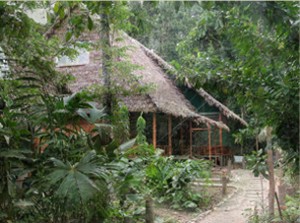 |
PERUVIAN
RAINFOREST
MANU
|
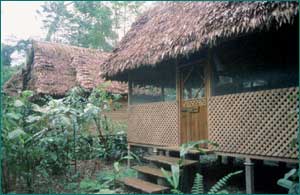 |
|||||||||
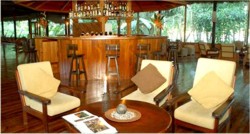 |
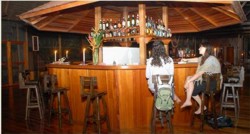 |
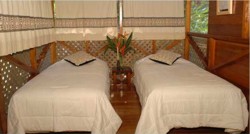 |
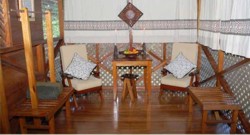 |
ABOUT MANU WILDLIFE CENTER - in their own words:
Manu Wildlife Center is located east of the Manu River on the north bank of Madre de Dios River and offers the Amazon's finest, in-depth wildlife safari. The lodge is famous for its abundant and varied wildlife, with its own Tapir clay lick, a nearby macaw and parrot clay lick, two nearby oxbow lakes and two tall canopy viewing towers among its impressive highlights.The Lodge contains 22 double-occupancy fully screened private bungalows, with hot showers, a large fully screened dining room and a charming bar with hammocks for relaxing.
Manu Wildlife Center has no electricity. Lighting in the communal areas is by kerosene lamp and candles, with the paths around the lodge complex lit by kerosene lamps. Lighting in the guests bedrooms is by candle. An 110Vand 220V generator is available from which camcorder batteries can be recharged. Please note that guests may need to bring a special adaptor to plug into the generator.
| GETTING
THERE: "getting there is half the fun!" 1) Fly commercial scheduled flight into Puerto Maldonado 2) then transfer by van to Santa Rosa village, about 3 hours overland 3) then 15 minute motorlaunch across the Inambari river 4) then one hour by motor vehicle to Boca Colcoardo Village 5) then three hour motorized boat ride up the Madre de Dios to the lodge |
GETTING
BACK TO CUZCO: Yes, the reverse of getting there as outlined to the left |
|
ABOUT MANU - in their own words: Manu offers by far the greatest quantity and diversity of animals and plants in the world. No other destination in Peru or beyond can compare with Manu. Nowhere else can you enjoy a superbly intact transect of tropical habitats from Andean grasslands and cloud forests down to foothill and lowland forests. Manu boasts the highest bird, mammal and plant diversity of any park on Earth, including 1,000 of the world;s 9,700 bird species, 200 species of mammals, and 15,000 species of flowering plants. The most photogenic spectacles are frolicking Giant Otters, 1,000 parrots and macaws at a riverbank clay lick, dancing Cocks-of-the-Rock, habituated moneys and huge Lowland Tapirs at a forest clay lick. What to do at Manu Wildlife Center The lodge boasts more than 30 miles of trails, half in scientific grid systems and two 120-foot tall canopy towers - huge, all metal circular staircase to the top of a huge tree, level with the forest canopy. It's a great way to while away a hot afternoon birdwatching. There are also two mature lakes with abundant Hoatzin, caimans and Giant Otters. But the two true highlights are the Macaw Lick and the Tapir Lick. |
|
The Macaw Lick The Macaw Lick requires an early morning departure by boat downstream and a 20-minute walk through palm plantations to a cut-off channel of the river to the Blanquillo Macaw Lick. A spacious hiude provided with individual chairs and a convenient place for cameras and binoculars provide our ringside seat for a spectacular show. Enjoy a full breakfast while waiting for the main actors to arrive. In groups of twos and threes the big Red-and-Green Macaws come flapping in, landing on the treetops as they eye the main stage below - the eroded clay banks of the old channel. Meanwhile the supporting cast appears: these may include Blue-headed, Mealy, Yellow-crowned and Orange-cheeked Parrots - and the occasional villan, a menancing and unwelcome Great Black Hawk. The drama plays out at first in tentative and hen bolder approaches to the lick, until finally nearly all the macaws, parrots and parakeets form a colorful and noisy spectacle on the bare banks, squabbling as they scrape clay from the hard surface.
This Macaw Lick, officially called the Blanquillo Lick, has been rated one of the top four commercial Macaw Licks in the world by leading Macaw expert Charles A. Munn, Senior Conservation Zoologist, Wildlife Conservation Society. |
|
The Tapir Lick The Tapir Lick requires a 90 minute walk in the dark over jungle trails to get to the lick and the same walk to get back to the lodge, and there is no guarantee a Tapir would visit the lick. The lick features a roomy, elevated observation platform 17 feet above the forest floor. The platform is equipped with freshly-made-up mattresses with pillows and covered by a roomy mosquito net. The 50-meter-long elevated walkway to the platform is covered with sound-absorbing padding to prevent our footsteps from making noise. The 30 minute to two hour usual wait before the first tapir arrives is well worth it to observe these shy, rare and elusive tapir in its reainforest home. |
| PROGRAMS: May to October | ||
|
|
The Bio Trip - Andes to Amazon
|